|
| They work with the script to work on intentions |
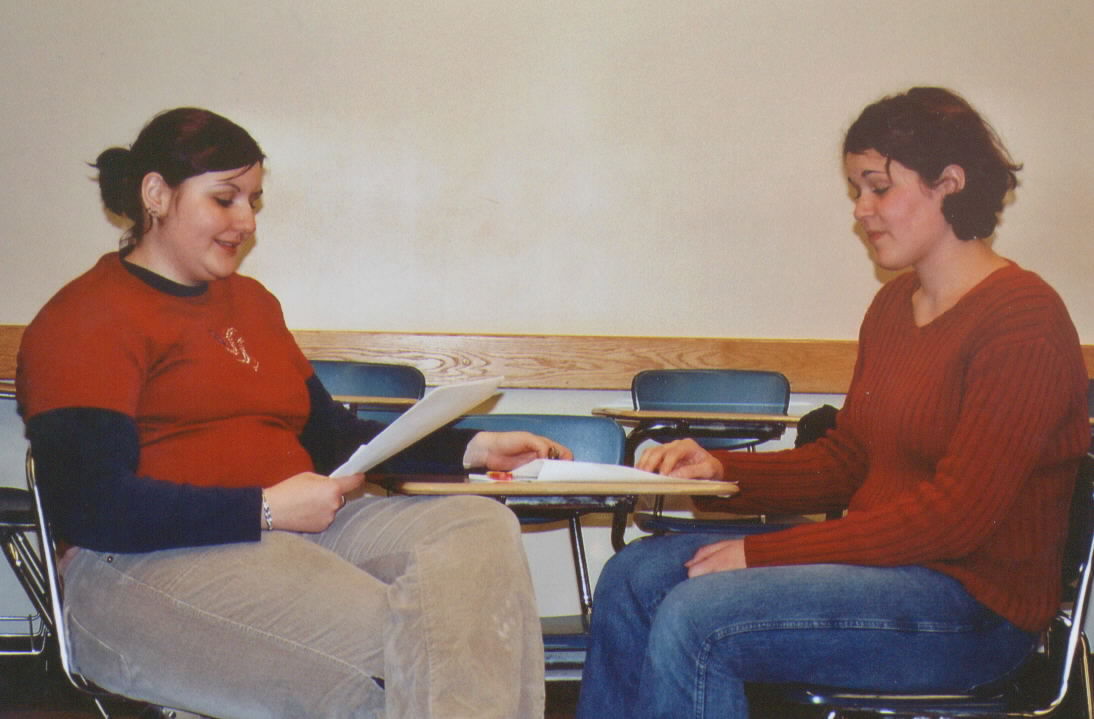
|
| The intentions lead to emotion that leads to expression |
As they read through each time, the actors will better understand their characters' intentions and they will develop
the thought patterns that support the intentions.The intentions lead to expression and action.
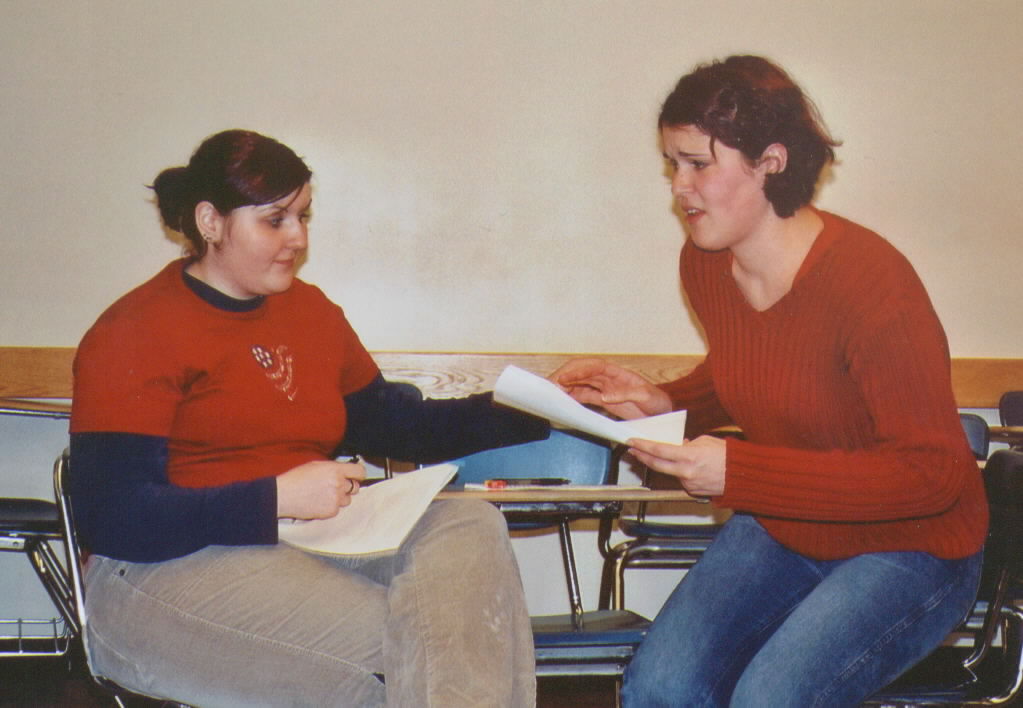
We find out that the "blind date" has just robbed her "blind date" blind.
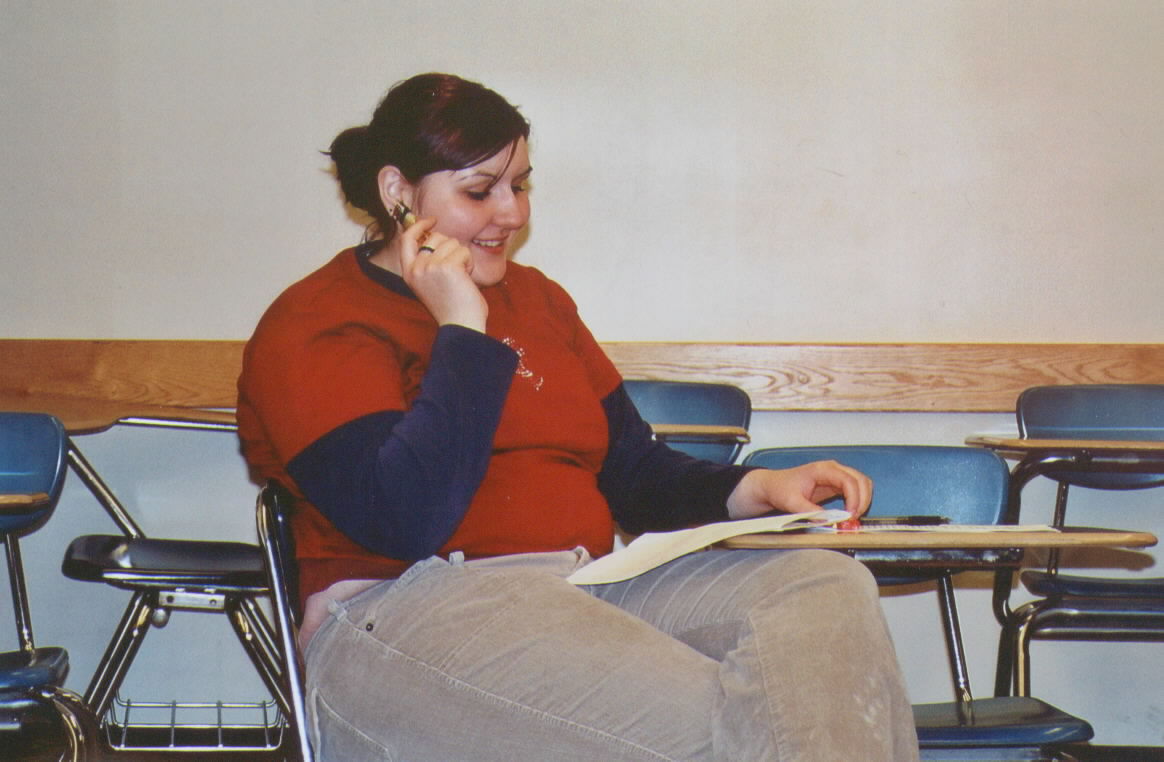
|
| The End |
* * * * *
* * * * *
* * * * *
* *
Another group has chosen the Doug Case and Ken Wilson sketch, "The Bank." It is about a woman that can't keep track of
her bank account and is, therefore, overdrawn. When the bank manager discusses her dilemma with her, a bank robber enters
to help her solve it.
| "Mrs. Moore, your account is overdrawn." |

|

| He tries harder |

|
| She strains to comprehend |
| The bank manager tries to make her understand |

|
| Mrs. Moore is unphased |
| The bank robber enters. |

|
| "NOBODY MOVE!!" |
| "Perhaps I need to be more emphatic," he thinks. |

|
| "Excuse me. I make $2000 a week!" |

|
| "I'm very busy at the moment." |

|
| "I'll be with you in a moment!" |
| "Oh, Really?" |

|
| The bank manager likes THAT idea. |
| The bank robber explains |

|
| He makes twice as much as he spends |
| "Well, just excuse me a moment, Mr. Steele, |

|
| and I'll get the necessary papers" |
| "Would you like to sit here?" |

|
| "Just a minute." |

|
| "I think something's gone wrong!" |
| "Ah, yes. Now, Mr.Steele -- " |

|
To find out what went wrong, please take a look at the sketches of the English Teaching Theatre to be found in the book
called, OFF-STAGE!
As one can see through the pictures above, physical expression goes hand in hand with dialogue and the one reinforces
the other. The process is a melding of Total Physical Response, which supports kinesthetic memory, and Suggestopedia (or Desuggestopedia)
which engages the right hemisphere of the brain invloving deep memory, feeling, and intuition to support learning.
* * * * *
* * * * *
* * * * *
* *
Meanwhile, Julie's third group is fininshing adding some more lines to their script to give one person a larger part.
Here again, a female plays a male part.
They are working on "Giovanni's Cafe," another sketch from the English Teaching Theatre.
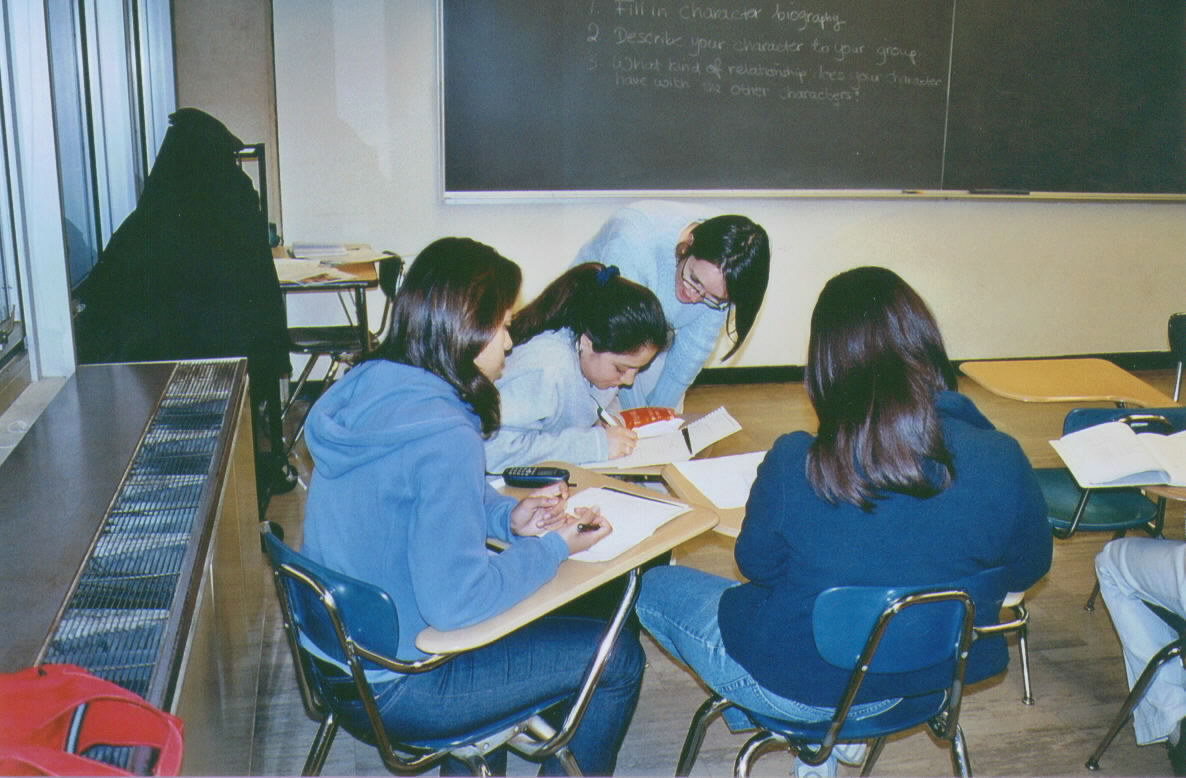
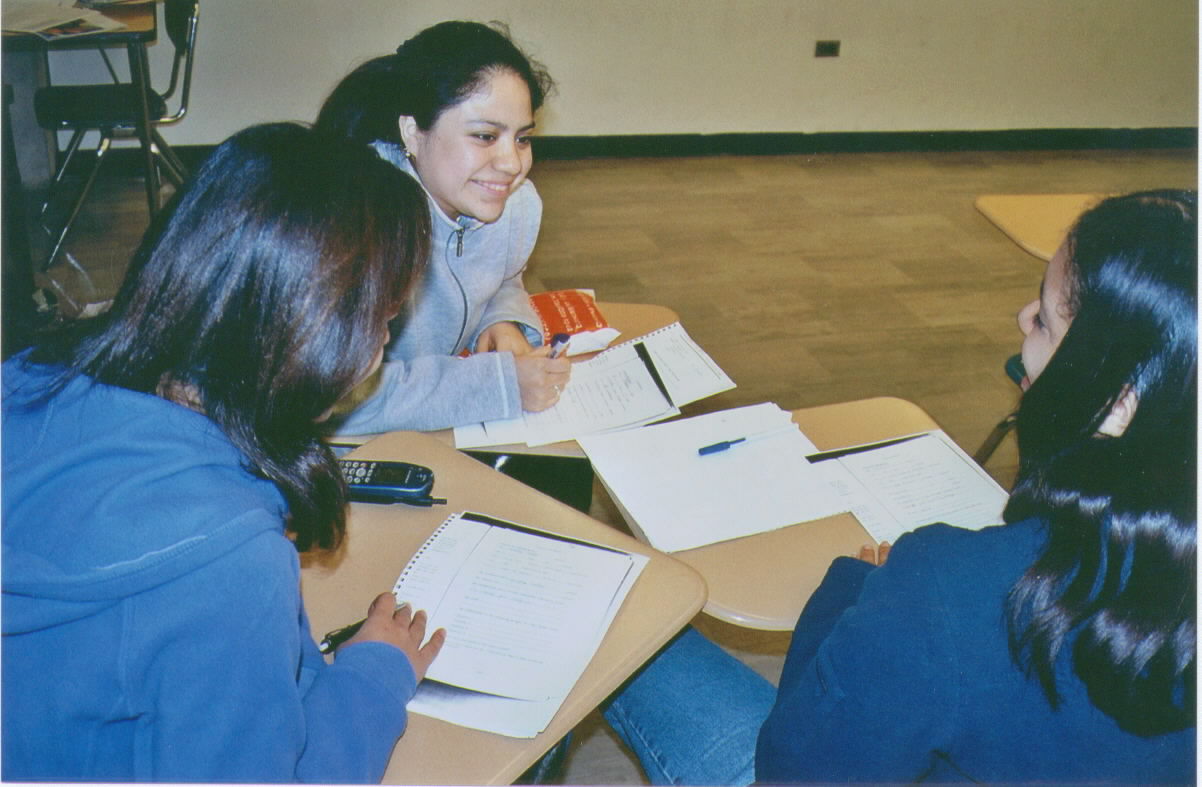
"Giovanni's Cafe" is about a couple, married for five years, who have finally found time for a holdiay in Rome.
There, they run into an old flame of Geoffrey's, an old flame about whom Geoffrey's wife has never heard.
Until now!
| "Just you, and me, and romantic Rome." |
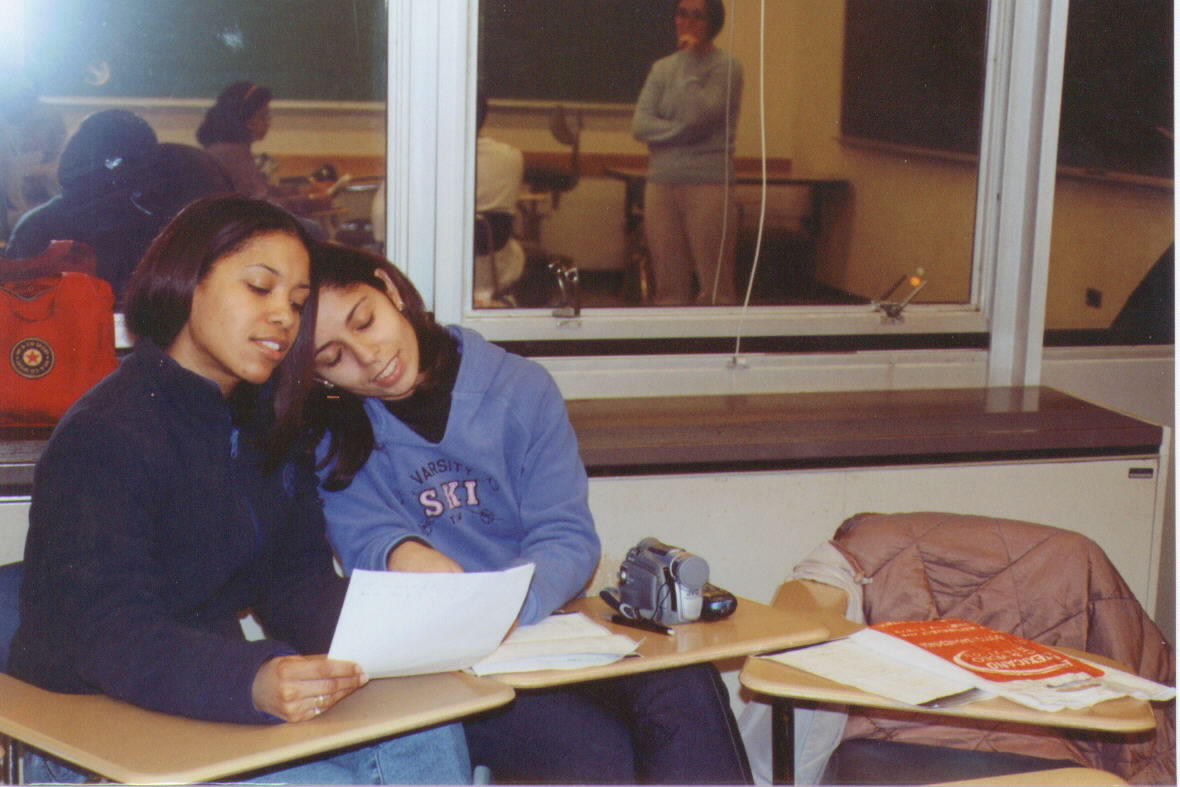
|
| "Well, here we are in Rome." |

|
As they contemplate the beauty of Rome, a girl comes up and asks if she can have a seat.
| Teresa, the old flame, enters. |
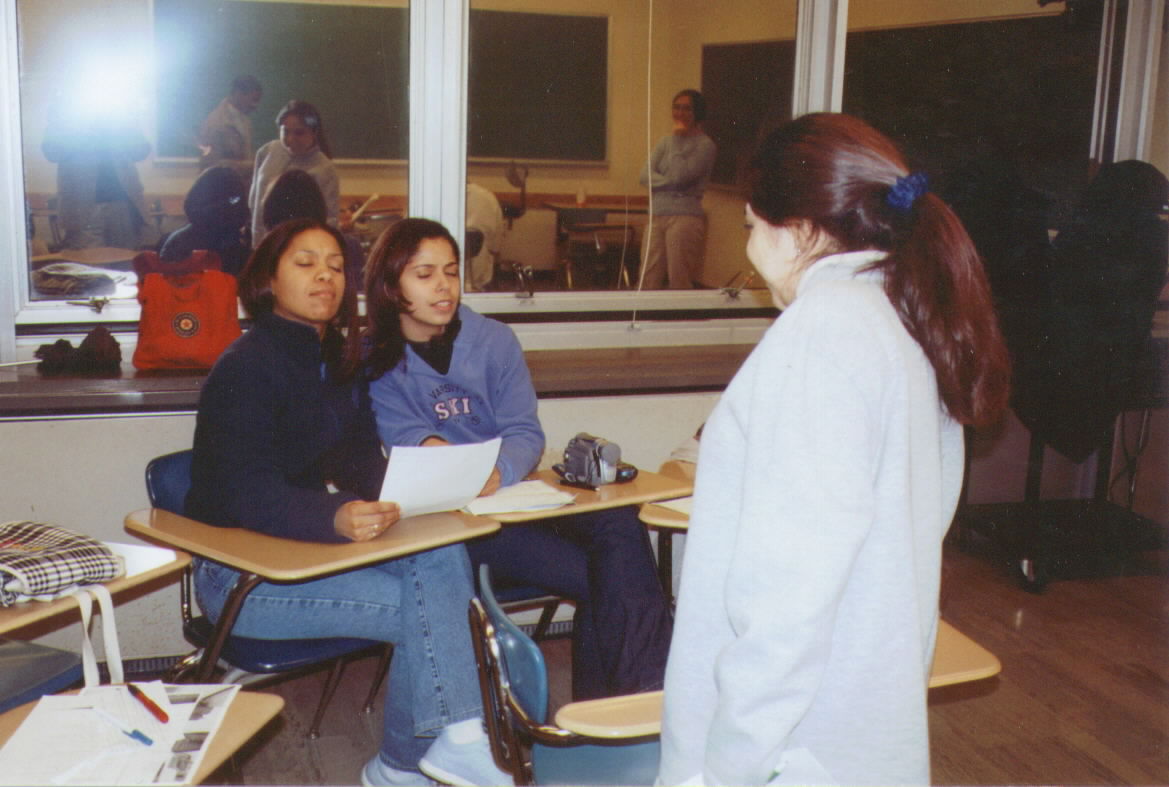
|
| "You told me I was the first woman in your life." |
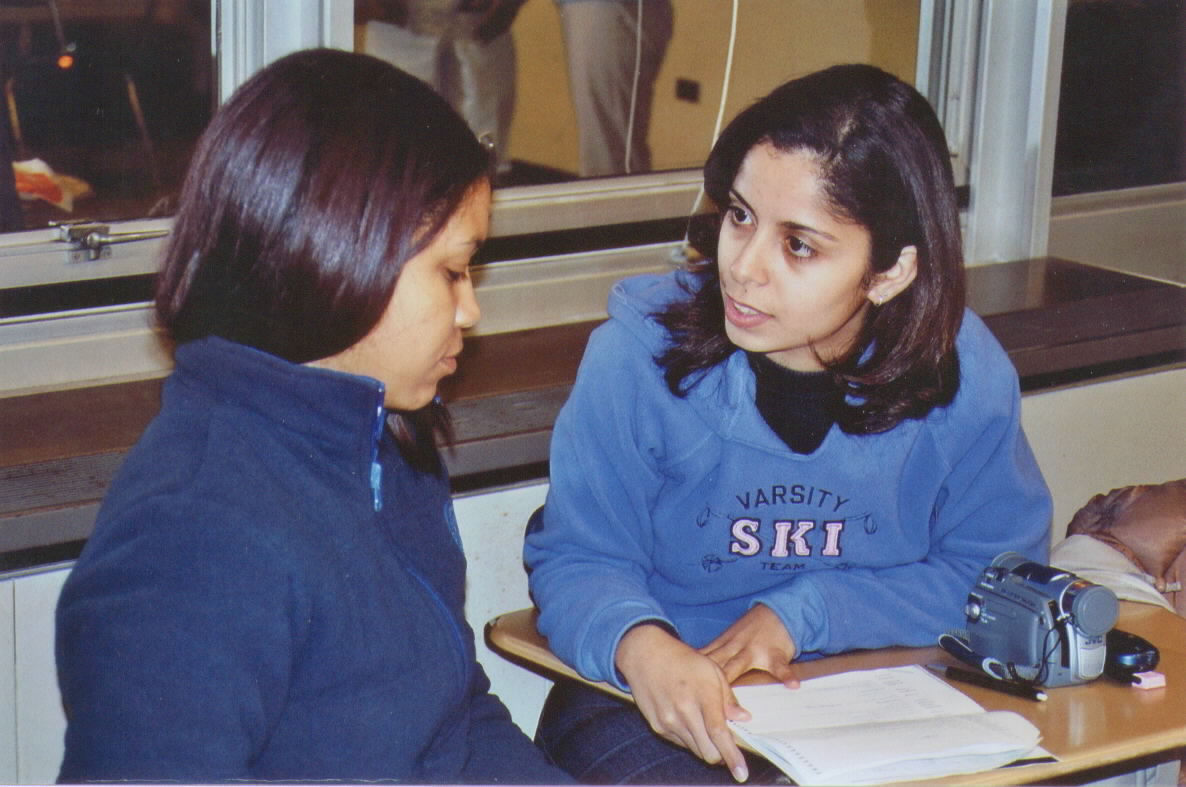
|
| "And I believed you." |
The girl recognizes Geoffrey as her old boy friend and starts reminiscing about their time together on the slopes while
he was a student. Geoffrey's wife, Dorothy, is stunned and by asking very penetrating questions, soon gets rid of the intruder.
| "So, before you met her... |
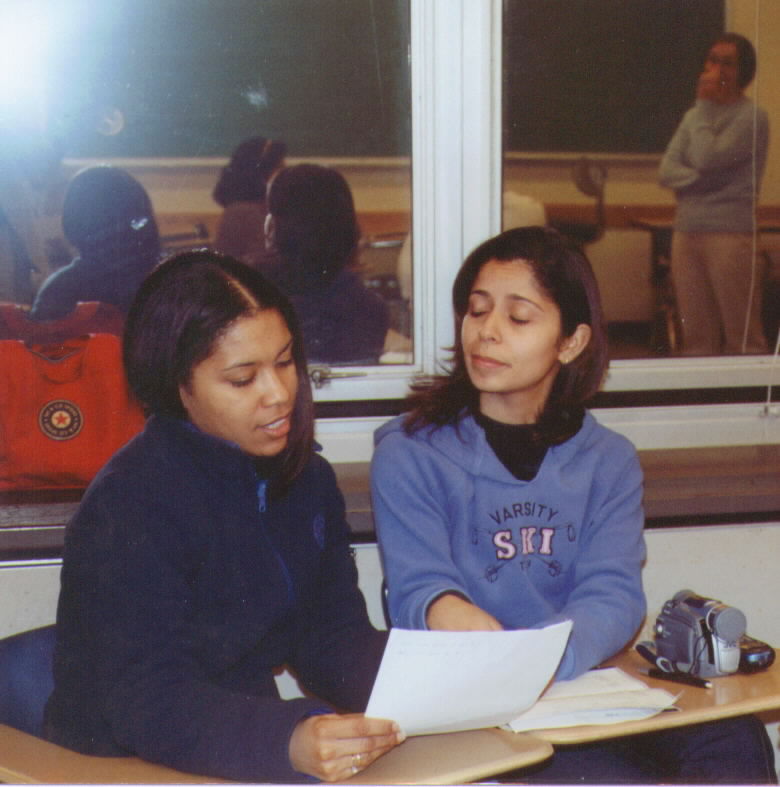
|
| You were just an innocent boy!" |
| Suddenly, Giovanni, the waiter appears. |
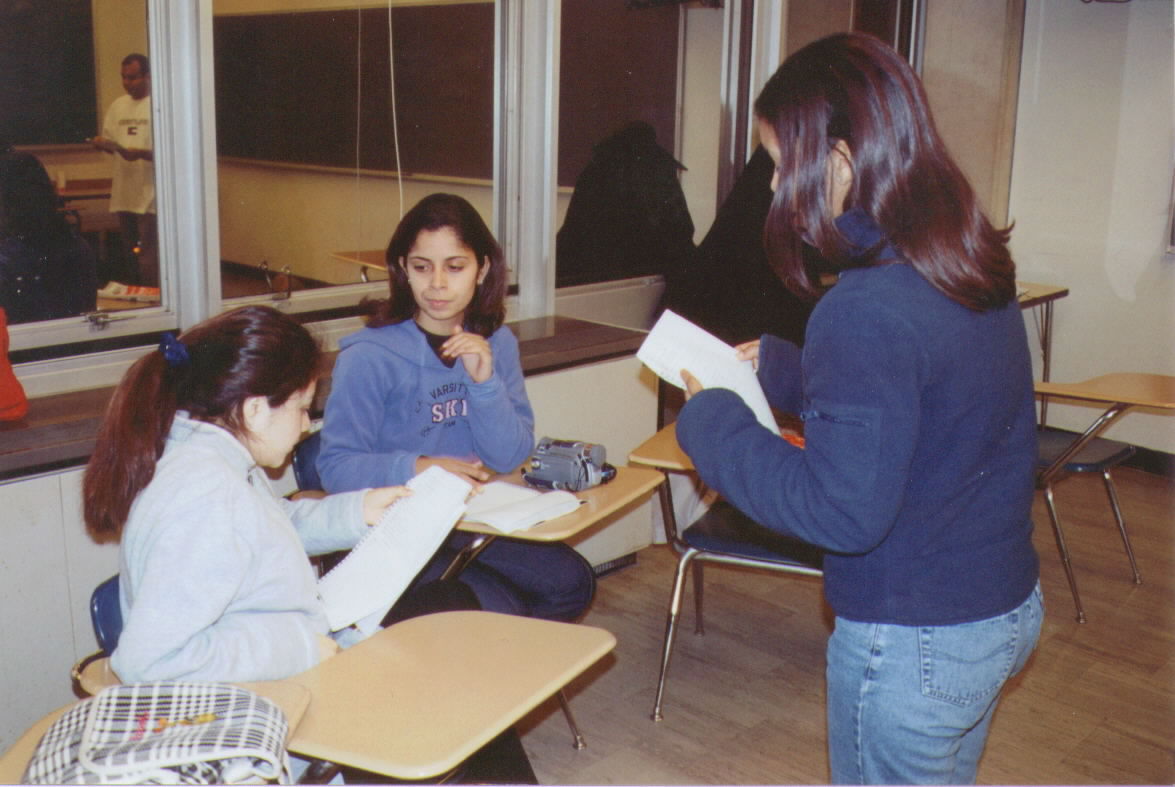
|
| He is an old flame of Geoffreys's wife. |
| "And I've been so honest with you." |
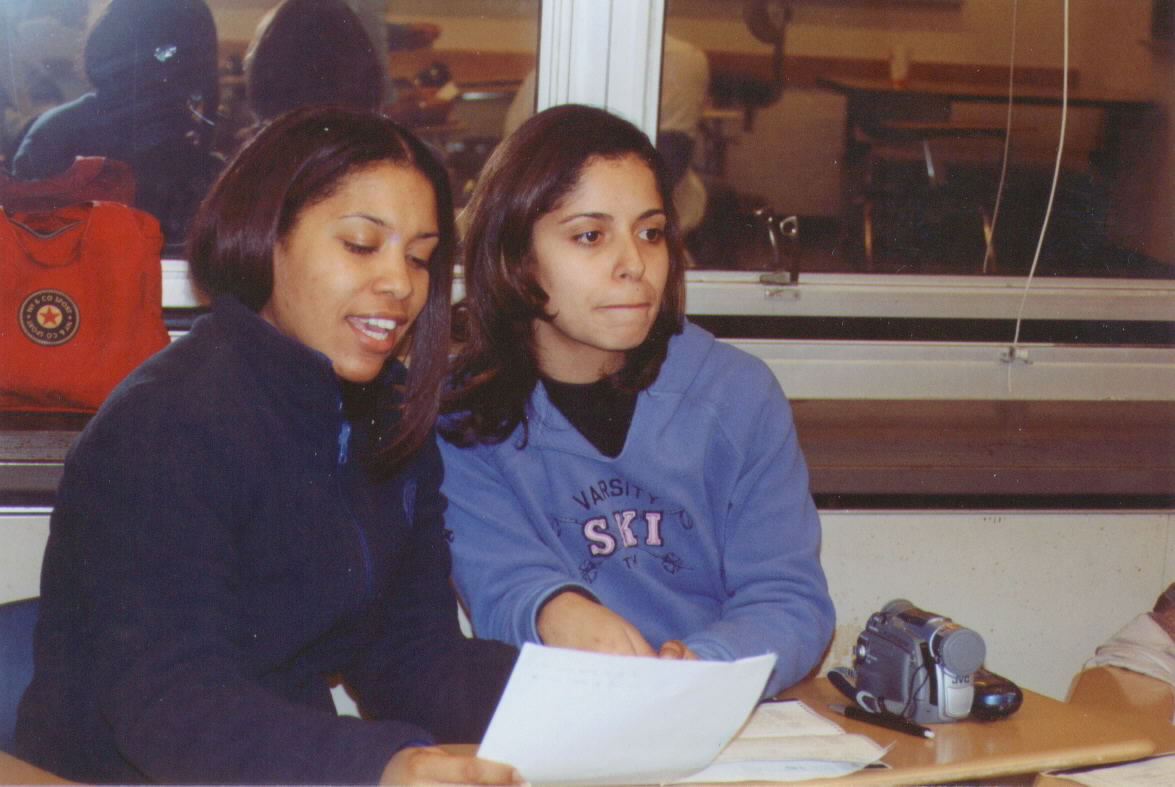
|
| "Come with me, Dorothy." |
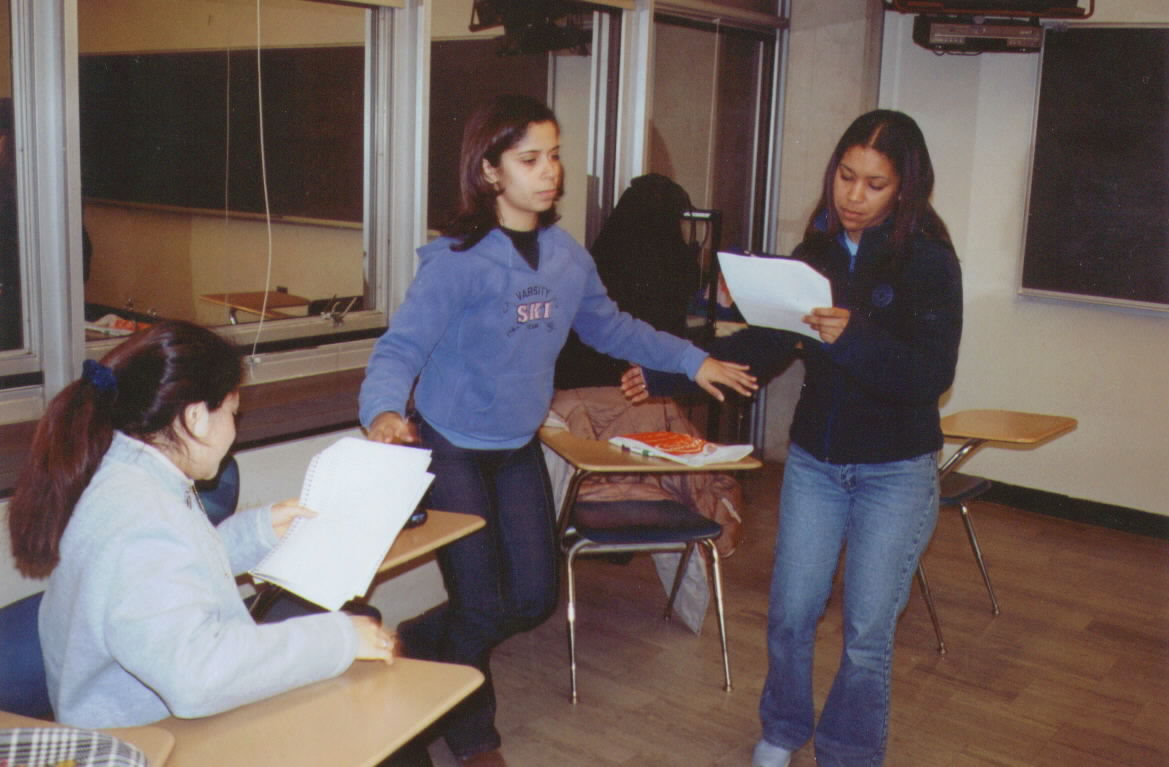
|
| "We've got so much to talk about." |
| "DOROTHY?!" |
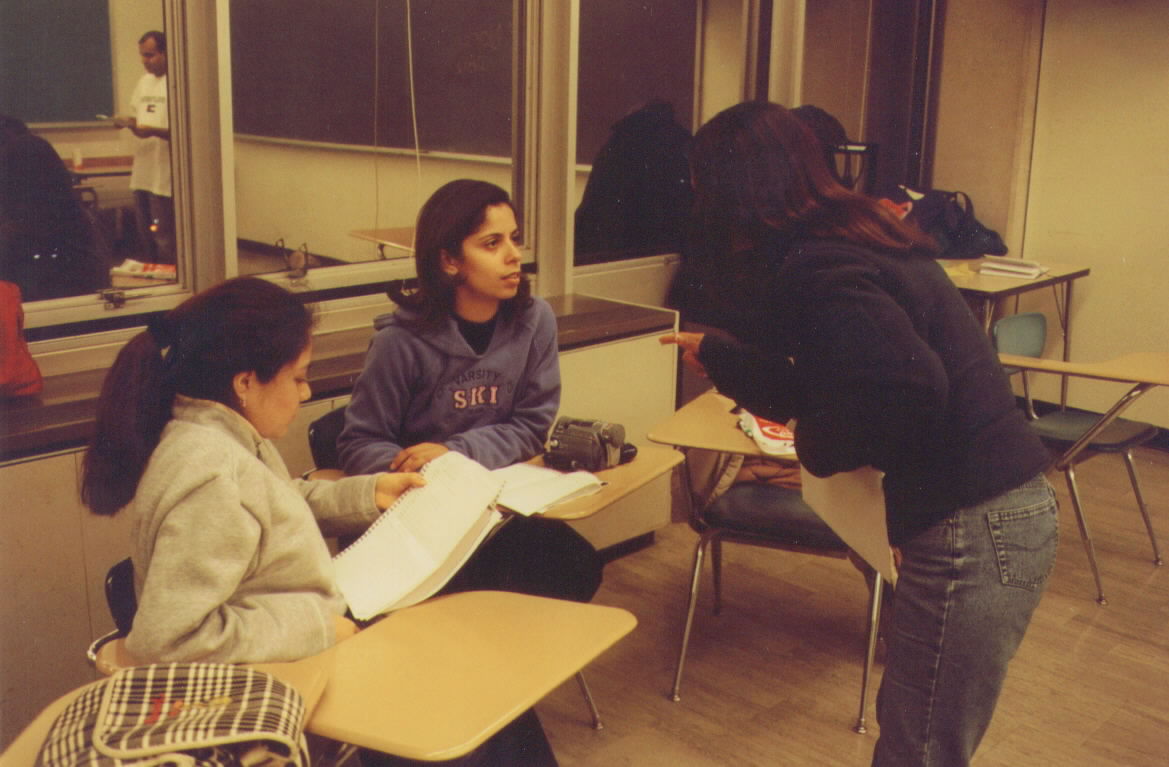
|
| "Dorothy. Dorothy!" |
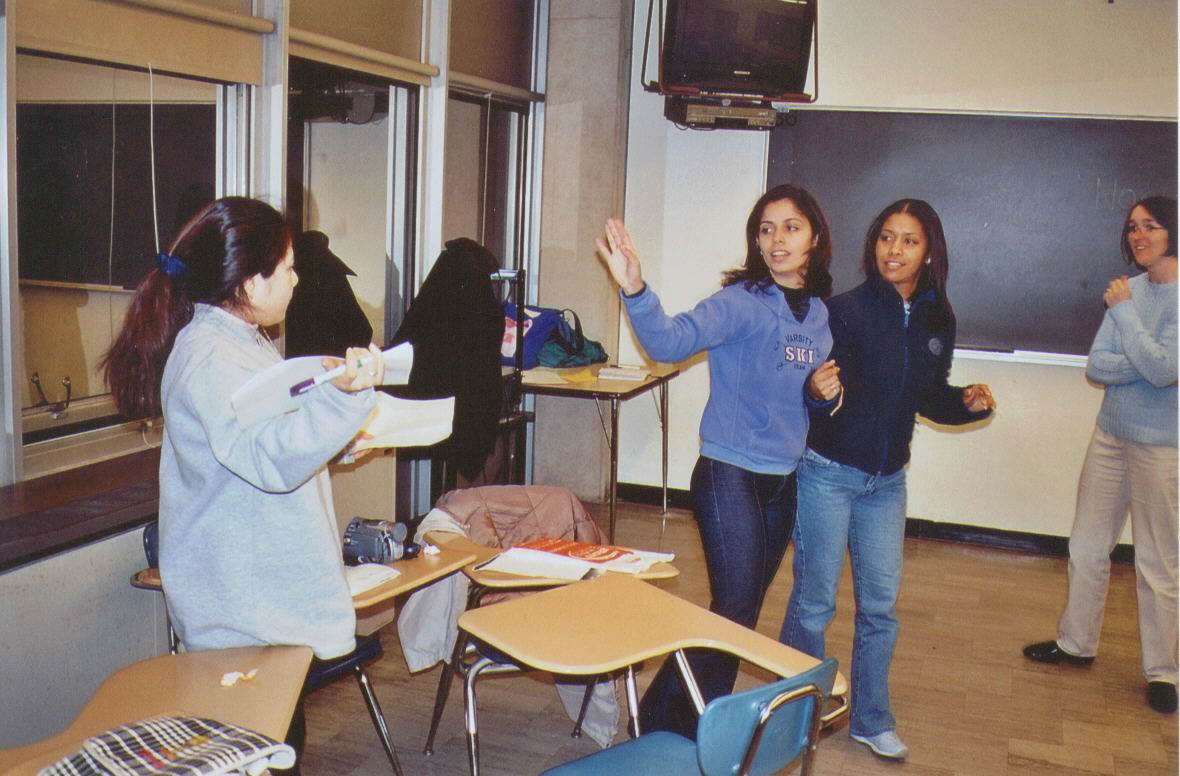
|
| "DOROTHY!!" |
| "Oh...er, yes...um...excuse me, Geoffry." |

|
And, with cries for Dorothy fading in the background, Julie wraps up the class for this evening.
The assignment? "Please read the text a number of times -- and, as your character, write what you are thinking and feeling
during each line and figure out how the line should be expressed."
With those instructions, the class ends.
Julie's approach is a fascinating one.
We have seen her maintain a focus on the physical event to integrate other language skills. Through the mime, students
learn new terms that emerge from the miming. Through the study of character, vocabulary is evoked and students have a platform
upon which discussion flows. Through improvisation in character, the students play with their new vocabulary as they hone
their character traits. Amazon and Polar walks energize student bodies and imaginations, bringing them to an alert and sensitized
state. In such a state, the students bring more discernment to their reading and relate the speech to the action, the action
to the speech. The students are using the language rather than studying it. As they use it, vocabulary, grammar,
and even culture become internalized. They become more than just their characters. They become their English-speaking selves.
Christine Parkhurst and the Massachusetts College of Pharmacy and Health Sciences
|

